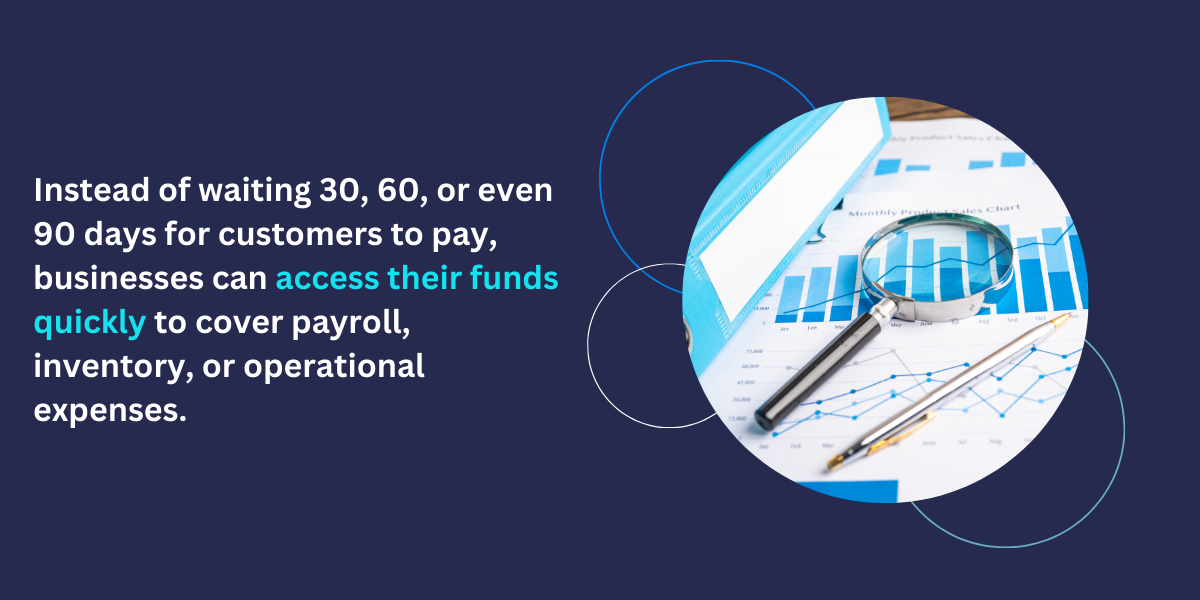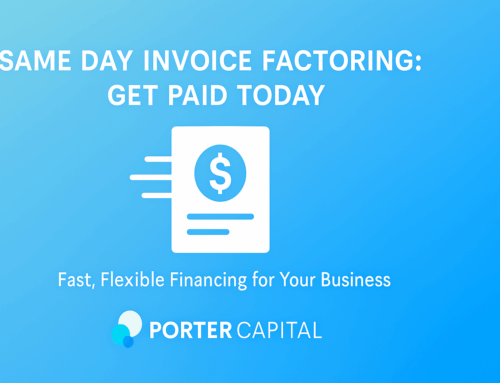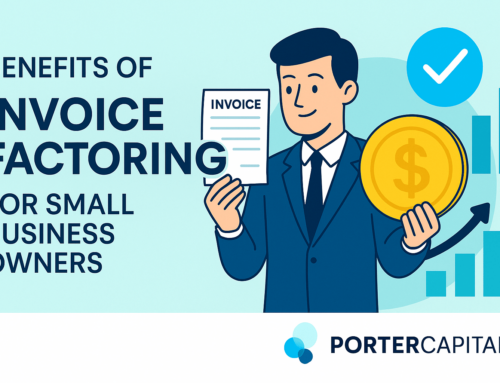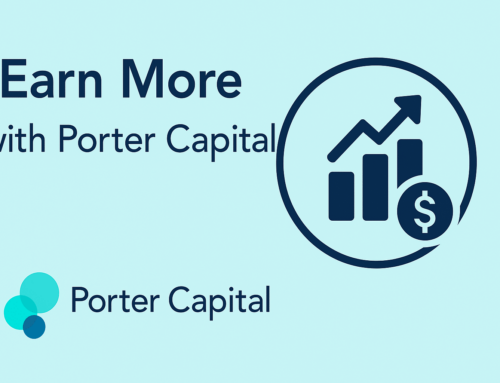Unpaid invoices are a problem for businesses. According to recent survey data, 73% of SMBs experienced problems with late payments, and 40% said continued delays could force them to close their business in the next year.
It makes sense: If invoices aren’t paid on time and in full, cash flow becomes a problem. In addition, staff need to spend time and effort contacting customers with outstanding invoices and asking them to pay ASAP. The result is an operational shift — instead of cultivating customer relationships and increasing sales, companies must focus on collections.
Invoice factoring offers an alternative.
What Is Invoice Factoring (and How Does It Work)?
Also known as accounts receivable factoring, spot factoring, or invoice discounting, invoice factoring is the practice of selling some (or all) of your outstanding invoices to a third-party provider. You provide your invoice as usual to customers and send a copy to your factoring provider. Customers then pay the factoring company directly.
Your provider gives you a cash advance on each unpaid invoice balance and takes on the responsibility of collecting the full amount of your invoice. Providers typically offer advances between 80% and 95% of the total invoice value, depending on the current financial state of your company and the creditworthiness of your invoiced clients. Invoice factoring providers charge a fee for this service, which is typically assessed per month.
Using invoice factoring, businesses can ensure consistent cash flow without the need to take out a small business loan.
The caveat? It’s critical to understand the total costs of factoring and the role of a reputable provider in delivering consistent invoice factoring services that don’t break the bank.
Get started here: Learn more about invoice factoring.
Understanding the Cost of Invoice Factoring
Two costs are common in factoring agreements: Interest rates and service fees.
Also called factoring rates, interest rates typically range from 1% to 5% of the total invoice value per month. This means that if you have a $10,000 invoice and the interest rate is 2%, the factoring company keeps $200 when the invoice is paid.
Service fees, meanwhile, may include minimum monthly fees, maintenance fees, and early termination fees, depending on the nature of your agreement with the factoring provider.
Here’s a quick example of factoring costs:
- Your business sells an invoice of $50,000 to a factoring provider
- The provider’s flat invoice factoring fee is 3% per month, plus an additional 0.5% in service fees, or 3.5% per month
- The provider offers a 90% cash advance with the remainder due when the invoice is paid.
This means you get $50,000 x 0.90 or $45,000 in a cash advance.
If the invoice is paid in the first 30 days, the provider takes 3.5% of the remaining balance, which works out to $5,000 x 0.035, or $175. Your business receives the remaining balance of $4,825.
It’s worth noting that service and interest fees are typically charged per month. This means that if clients take 60 days to pay their invoice instead of 30, you pay twice as much, or $350, and receive the remaining balance of $4,650.
Factoring fees also differ based on the amount of your invoice, the creditworthiness of your customer, and the type of factoring agreement you have — recourse or non-recourse.
For example, the interest rate for a $500,000 invoice may be 4% or 5%, while the rate for a $50,000 may be half that. This is because the advance cash amount is significantly higher in the first case than the second — $450,000 vs. $45,000 for a 95% advance — which means greater financial risk for the factoring company if the invoice is not paid.
Recourse vs. Non-Recourse Factoring
Factoring agreements are either recourse or non-recourse.
In a recourse agreement, your business is responsible for covering the cost of an invoice if the customer refuses to pay. Provider contracts will specify when recourse applies — for example, after a certain period or after a specific number of attempts to contact customers and negotiate payment terms.
In a non-recourse agreement, the provider assumes all liability for invoices. This means that if invoices aren’t paid or customers refuse to return calls, the provider absorbs the cost of the lost payment.
Not surprisingly, non-recourse agreements are more expensive than recourse agreements. Consider the $500,000 invoice example above. In a recourse agreement, if customers fail to pay the factoring company within the agreed-upon timeline, the invoice defaults back to your company. You are then responsible for collecting the money and paying back the cash advance from your factoring provider.
In a non-recourse agreement, the factoring company accepts the $450,000 loss if customers do not pay. While credit checks and historical payment data can help lower the risk of non-payment, factoring companies charge significantly more for non-recourse factoring to offset the potential loss.
Comparing Invoice Factoring to Other Financing Options
Along with invoicing factoring, there are other options to help finance your business. Common examples include business loans, lines of credit, and what’s known as invoice financing. Here’s a look at each in more detail.
Business loans
Business loans are issued by banks or other financial institutions. Your business applies for a loan based on needed capital and operational expenses, and the bank approves or denies the loan.
For example, if you have $1,000,000 in completed unpaid invoices, the bank might lend your business $700,000 or $800,000 at a fixed interest rate over a set term. While this provides immediate access to cash, it also means you’re on the hook for repayment — even if you can’t collect outstanding invoices.
Lines of credit
Credit lines are similar to loans. The difference is that instead of a lump sum up-front, you draw from a maximum credit amount, which you must then pay back.
Consider a $100,000 line of credit. You can draw all of this amount immediately or only draw as much as you need to stay operational. You must pay back whatever you draw. In addition, most lines of credit have a specified draw period, followed by a repayment period. This means that you can only draw from the credit line for a set amount of time, such as one or two years. After the draw period has passed, you must pay back the full amount, plus interest.
While a credit line offers more control over the amount you borrow, you’re still responsible for ensuring invoices are paid and repaying the loan.
Invoice financing
In the case of invoice finance services, you borrow money from a financing company against the balance of your outstanding accounts receivable. When your customers pay their invoices, you use this money to pay back your invoice financing company, plus any applicable fees and interest.
Like invoice factoring, this approach provides immediate cash flow access. Unlike factoring, however, invoice financing is a loan based on your outstanding invoice amount. The longer you take to pay back the loan, the more expensive it becomes.
What Sets Invoice Factoring Apart
While loans, lines of credit, and invoice financing are all viable options for businesses, they share a common component: debt. In the case of a bank loan, your business must make payments (plus interest) every month. While you receive the total loan sum up front, you may end up paying significantly more than the total amount borrowed over time.
In the case of bank lines of credit or those offered through invoice financing, you have a pool of money you can draw from and reuse as you pay it back. Much like a business loan, however, the cash provided comes with expectations. In the case of lines of credit, you make payments every month, while for invoice financing you need to repay the line of credit when you collect the invoice.
It’s also worth noting that in all three cases, your business is the one responsible for collecting payment from customers. Instead of selling your invoices to factoring companies, you’re simply borrowing against the potential returns on collected payments.
Benefits of Invoice Factoring for Small Businesses
Invoice factoring services offer several benefits for businesses, including:
- Access to immediate cash flow: Cash is available almost immediately after invoices are submitted to your factoring company.
- No debt accumulation: Because you are selling your debt, not taking out a loan or line of credit, you do not accumulate new debt.
- Simpler qualification processes: Your invoice collections represent an asset for sale. While some vetting is required to ensure customers are creditworthy and likely to pay, invoice factoring does not require up-front capital to access funds.
- Outsourced collection efforts: After you submit your initial invoice to customers, factoring providers take care of the collection process and pay the remainder of the invoice balance (less interest and fees).
Managing Credit Risk with Invoice Factoring
Debts count against your credit score, making it harder to obtain large-volume loans for capital purchases or other expenses.
Invoice factoring can help reduce your risk of low credit scores by removing the debt portion of the equation. Unlike loans, lines of credit, or invoice financing, which lend money or provide access to credit lines based on the creditworthiness of your outstanding accounts and your ability to pay back this debt, invoice factoring incurs no debt and therefore does not count against your credit score.
This is because you are selling your debt to other companies for collection. The cash advance provided and the remainder of the balance given once the invoice is paid is not a loan — it’s an exchange. Using invoice factoring, you can stabilize your credit score and ensure credit is available as needed.
Four Tips for Effective Factoring
Preparation is the key to invoice factoring success. Here are four tips to help your business make the move.
1) Identify areas for invoice improvement
Before signing an invoice factoring agreement, pinpoint areas for improvement. Consider a company that sends out 100 invoices each month. Of those, 10 are regularly late, leaving staff with the time-consuming job of pursuing payment.
In this case, it may not make sense to outsource all 100 of your invoices since 90% are paid on time. Factoring the last 10, however, can save both time and money.
2) Ensure invoices are completed
As noted above, your invoices must be sent to both customers and your factoring provider before advance payment is available. If invoices are incomplete — for example, if they’re missing data or the data provided isn’t accurate — your factoring company won’t process them. Double check all invoices before sending them out.
3) Read (and re-read) your factoring agreement
Not all invoice factoring providers are created equal. Make sure to read (and re-read) your agreement so you know exactly how much you’re being charged per invoice and per month. Your total invoice factoring rate is tied directly to this agreement, so it’s worth being thorough.
4) Communicate the change with your customers
One key component of invoice factoring is that your customers pay the factoring company. Make sure to communicate this change with customers — if they suddenly start getting payment and collection notices from unknown companies, they may be a) worried they’re getting scammed or b) take their business elsewhere because you didn’t keep them in the loop.
Selecting the Best Factoring Company
Choosing the right factoring company is critical to ensure you get access to capital on demand and don’t pay too much in the process.
Here, three factors are critical: cost, customer service, and contract terms. When it comes to cost, look for low invoice factoring fees from reputable providers. For example, at Porter Capital, we offer factoring rates as low as 0.75%.
Customer service is also critical. Providers should be quick to deliver your capital and respond to any inquiries. With Porter Capital, your funding is available in as little as 24 hours. Finally, seek out providers that offer clear and comprehensive contracts with up-front fee structures.
Common Denominator: The Role of Invoice Factoring in Small Business Success
Invoice factoring offers a cost-effective way for businesses to access value tied up in accounts receivable without having to take out loans or take on debt.
While it’s important to conduct a cost-benefit analysis before signing any agreements, the right invoice factoring company can provide peace of mind that invoices will be paid and deliver significant amounts of capital on demand.
Curious if invoice factoring is a good fit for your business? Check out our invoice factoring calculator and see how we can help.




